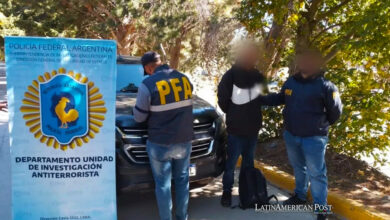Argentina: 4 million people live in precarious conditions
That number corresponds to people who live living in slums, towns, and settlements in precarious conditions.

Many of the inhabitants of the popular Argentine neighborhoods live in precarious conditions. / Photo: Wikimedia-Aleposta
LatinAmerican Post | Marcelo Jaime
Escucha este artículo
Leer en español: Argentina: 4 millones de personas viven en condiciones precarias
According to data published by the Ministry of Territorial Development and Habitat of the Argentine Republic, more than 4 million people (1 out of 10) live in "popular neighborhoods, towns, and settlements across the country" in precarious conditions.
Within the framework of the so-called National Register of Popular Neighborhoods (RENABAP), it was announced that there are more than 900 thousand families distributed in 4400 neighborhoods. Although this situation occurs throughout the country, a greater concentration occurs in the Province of Buenos Aires.
What are the precarious conditions of the so-called popular neighborhoods?
For the ministry, “a popular neighborhood is considered to be the vulnerable villas in which at least 8 grouped or contiguous families live together, where more than half of the population does not have land title or regular access to two or more, of the basic services (running water network, electrical energy network with household meter and/or sewer network)”.
The more than 4 million people who live in these neighborhoods have to face extremely adverse living conditions. This situation of helplessness puts at risk the health and personal development of those who have no choice but to settle in these settlements. The outlook is especially delicate for young people, as more than half of the total is under 24 years old.
Also read: 'Low' socioeconomic status is the biggest barrier to STEM participation
Origin of popular Argentine neighborhoods
According to a report by Techo, an organization present in 19 Latin American countries and dedicated to collaborating with people living in popular settlements, in Argentina the process of forming popular neighborhoods in precarious conditions had a strong acceleration in the 90s decade. However, its origins date back over 80 years, spanning several generations.
This growing phenomenon is not alien, of course, to the constant economic ups and downs that Argentina has suffered. In this sense, the recurring economic crises have thrown millions of citizens into unemployment and poverty. However, among the specific causes, the sustained increase in the price of both land and housing can be mentioned. Given this fact, the State has been unable to offer loans or housing solutions to the appropriate extent. In addition, the credit requirements of private institutions are unattainable for the inhabitants of those neighborhoods.
In addition to the precarious conditions in which they live, people living in settlements must face social stigma. In this regard, the Techo organization affirms: “The few studies on the generations' housing trajectory and the growth logics of the popular neighborhoods in Argentina reinforce the false idea that the permanence of young people in the popular neighborhoods is tied to the lack of effort, study, etc., ignoring the true reasons for the problem and presenting the experiences as isolated cases”.
What solutions does the Argentine State propose?
Regarding the possible solutions provided by the State, the purpose of the survey is to grant a certificate of Family Housing. Said document allows the residents of the popular neighborhoods to prove their domicile "before any national, provincial or municipal public authority". In addition, it allows them to request the services of electrical energy, water, natural gas, sewers, and transportation.
Finally, the ministry states that "it is preparing to launch a comprehensive infrastructure plan that will work on the priority axis of guaranteeing access to the water network, sewers, and electricity to neighborhoods, sidewalks, asphalt, lighting, community spaces, among others ".





